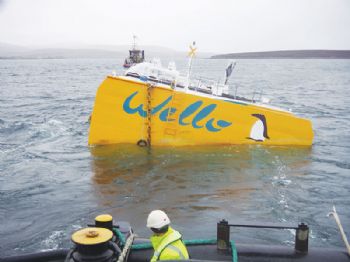
The Finnish company Wello (
www.wello.eu) has launched an equity ‘crowd-funding’ campaign, with the aim of raising at least 1 million euros (through the Invesdor crowd-funding platform) to support its two-fold growth strategy.
The campaign started on 21 December and attracted investments worth more than 500,000 euros in the first week; it runs until 14 February. Wello initially plans to identify markets where its Penguin wave-energy solution would be a good fit.
These include Penida Island in Indonesia, for which the company will be supplying 10MW of Penguin devices as part of its first commercial order.
Other suitable markets include the Easter Islands, the Falkland Islands and Greenland, although Wello says its wave-energy
solution is viable on almost any coast.
In the second stage of its growth strategy, the company expects the cost of its device to halve by 2019, which will open up new markets.
Currently, an average-size Penguin device costs about 2.4 million euros and has an average power output of 200-300kW.
The Penguin produces energy through the asymmetrical shape of its hull creating a gyrating motion with each passing wave, which causes the rotator inside the hull to rotate.
Wello says the direct power train from wave to electricity means there is no loss of efficiency in the system; and as the device does not have any moving parts in contact with sea water, it requires minimal servicing.